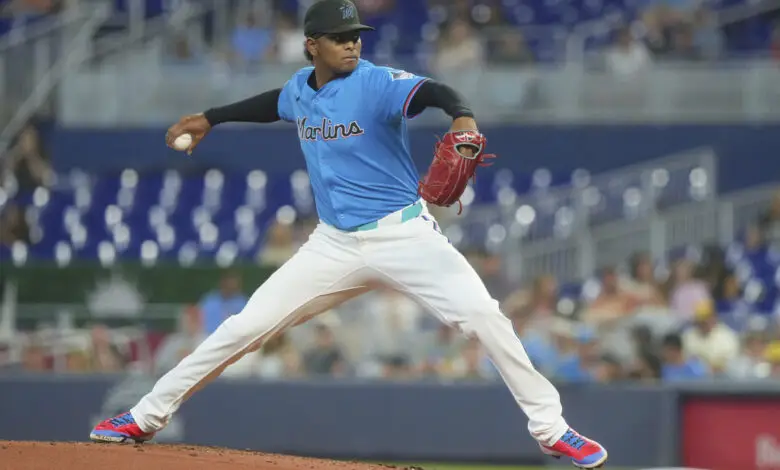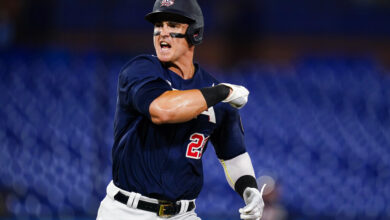
Cubs’ Deadline Efforts Stifled by ‘Massive’ Trade Costs That Included Shaw, Horton
The 2025 trade deadline was a remarkable one, but it was more about which players weren’t traded than those who were. That was certainly the case for the Cubs, who made a series of underwhelming deals to add depth rather than improving the top end of the roster. That was particularly true for the rotation, which has been hammered by injuries and inconsistent performance.
Starting pitching was the main attraction on Thursday, even if things didn’t unfold the way everyone expected. Dylan Cease, Zac Gallen, Sandy Alcántara, Edward Cabrera, and Mitch Keller were all expected to be traded, or at least heavily dangled in negotiations. Instead, they all remained with their respective organizations. Joe Ryan and MacKenzie Gore were viewed as long shots to be dealt, and that turned out to be the case as no one got close to making an offer that worked.
A plethora of rotation-caliber arms were moved, including Adrian Houser, Merrill Kelly, Shane Bieber, and Charlie Morton. After it was all said and done, Jed Hoyer’s lone addition to the starting rotation was Michael Soroka. The former White Sox swingman isn’t bad by any means, but he’s a back-end starter who will likely be displaced once Jameson Taillon and Javier Assad return from the IL.
The response from fans was tepid at best and many were downright incensed. In a season where the roster is clearly built to compete for more than the NL Central, making the necessary moves to patch a few holes seemed like the obvious choice. The Cubs also only have Kyle Tucker for this season, yet another reason why it would have made sense to push more chips in for better arms.
The big problem for Hoyer and the Cubs when it came to landing a legitimate starting pitcher was just how many chips it would take just to sit at the table. Ever since the playoffs were expanded to include three wild-card teams per league, the deadline has been hectic. More teams have a chance at making the postseason, giving them more initiative to buy — and less to sell — when the last week of July rolls around.
“It wasn’t an unwillingness to part with prospects,” Hoyer told 670 The Score. “It was sort of an unwillingness to go to that length we’d have to go, to the depth and volume that we’d have to go. There’s no question you have to be willing to part with prospects to get really good players. I think the question is how many and at what cost…
“And also, it’s about what players are actually available. I think that’s always an important thing, that at the deadline it’s sort of a select group of players based on who’s out of the race and who’s willing to transact. Some of the guys that people thought were available, they weren’t actually even available.”
These new-ish circumstances have driven prices up around the league. One league source called the pitching market “unreasonable,” with another describing it as “absolutely insane.” Although the Cubs would have loved to bolster their rotation, it would have been at too high a cost.
“Without going into it specifically, I think a lot of those guys would have not only taken off the major league team, but taken a lot of depth of our system,” Hoyer explained. “And ultimately, we made the decision that those prices didn’t make sense for us to be sustainably successful, and I think the market said that no one else did either.
“We’re not the only team that was in that market, there were a lot of teams looking for that kind of [controllable] starting pitcher. And I think the fact that everyone sort of made the decision, it kinda tells you that the teams that had those kind of pitchers, they really valued them…they expect a massive return to do it.”
Prospects have so much volatility that seemingly overpaying for proven talent can often work out, especially if you’re talking about a player with years of control. Alas, teams were asking for players that Hoyer couldn’t justify moving. Sources have informed CI that a combination of Cade Horton, Matt Shaw, and Owen Caissie was required in most deals for a controllable starting pitcher.
We’d be having a very different conversation if teams were just asking for a combination of Cubs prospects, but teams constantly included Shaw in their demands. The rookie third baseman has been one of the best hitters on the team since the All-Star break, posting a 212 wRC+ with four homers. It makes sense that other teams want him, but trading Shaw was out of the question.
Ryan was one of the most enticing options when scouring the market for arms under team control for multiple seasons, but the Twins wanted more than the Cubs were willing to part with. The Cubs also had deep discussions with the White Sox on Houser, but the price was again deemed too much. Houser is also a rental with a spotty track record, which impacted the Cubs’ willingness to stretch their offer.
Cabrera has been of interest for several months, with the trade deadline presenting itself as the perfect opportunity to bring the hard-throwing righty to the North Side. Sources have said the Cubs were willing to part with several top prospects, but the Marlins decided it still wasn’t enough. Unless Hoyer was going to overpay to a point where it significantly hurt the team’s future down the line, acquiring one of these top-end arms wasn’t in the realm of possibilities.
The Cubs are a better team today than they were a week ago, and that shouldn’t be taken for granted. The additions they made will help them win more games, but it still feels like there was a lot of untapped potential in the transactions that weren’t made. Now we’ll have to wait until the offseason to dream about all of these trade packages again.

